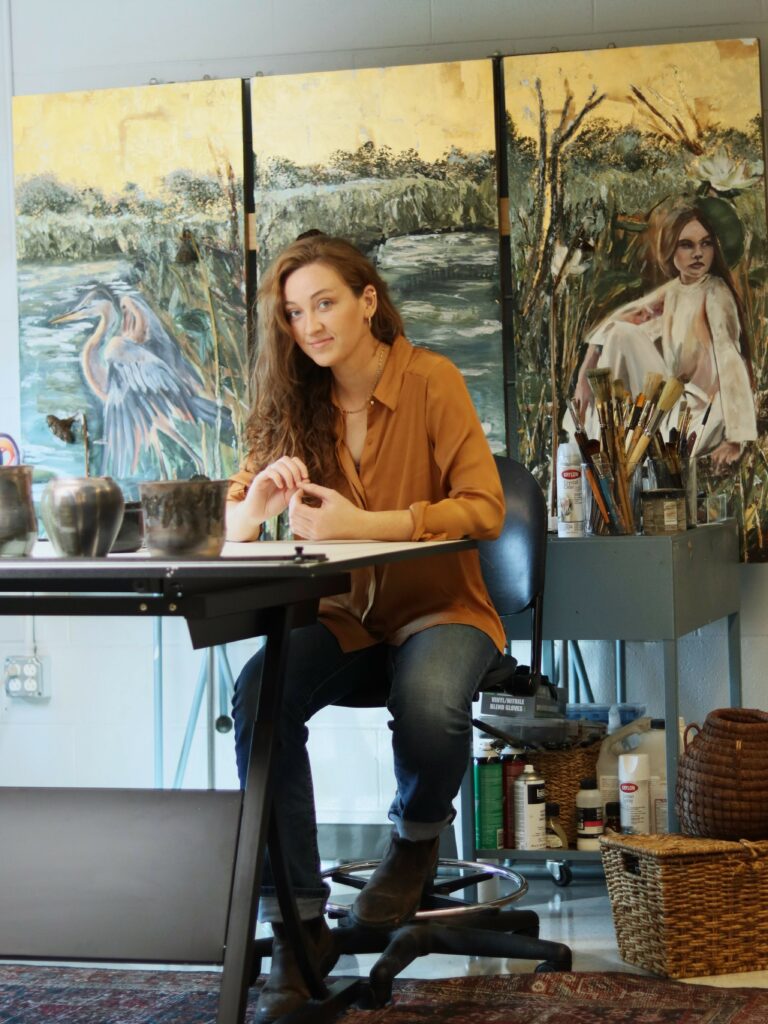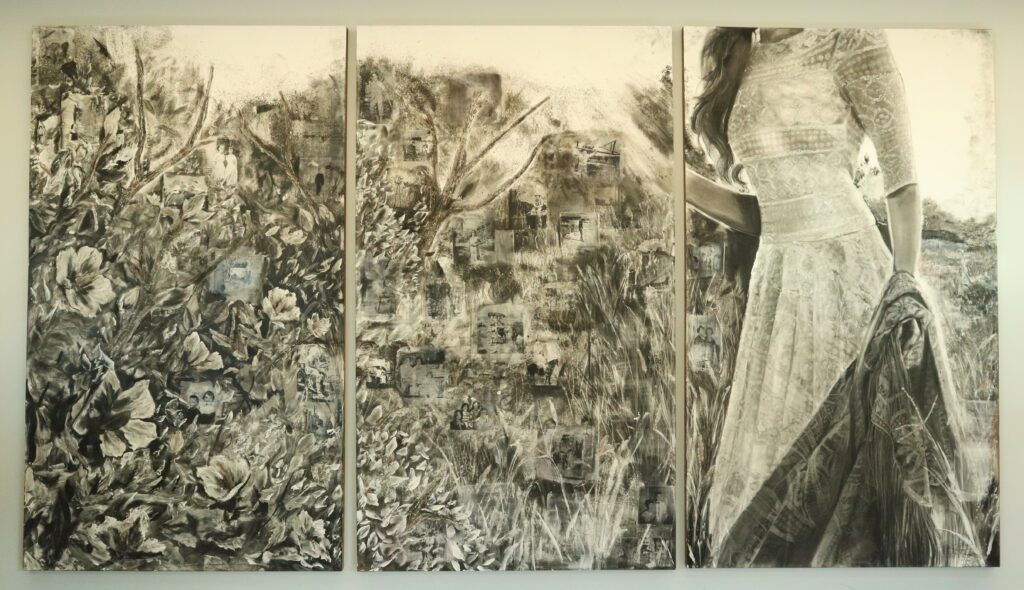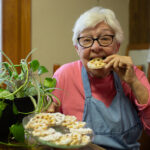Intro and interview by Erin Urhahn
Kate Cooper is a local portrait artist attending Southeast Missouri State University who is inspired by people, nature and simplicity. With roots seven generations deep in Bloomfield, Mo., she’s learned from her family how to embrace the farming lifestyle and remain open-minded. She’s chosen to stay in this place that feels like home for college to continue to capture the intimate moments in life and inspire people with her work.
Here, Kate talks with us about her experience as an artist and how it’s allowed her to connect with people, her family and herself. This conversation has been edited for length and clarity.
Erin Urhahn: When did you know you loved art?
Kate Cooper: I feel like I’ve always been making. It didn’t matter what it was, I’ve always wanted to know how things work. I’ve always been the messy child in my family. My dad tells the story: When I was three, I used a Ring Pop to try and color my mom’s van pink. Obviously, it didn’t go well. It’s been a long time coming, but I feel like 14 is when I was really kind of involved. It’s when I started drawing and doing a lot of leather carving and sculpting, and just like trying it all, because I was very bored. I was homeschooled. We didn’t do a lot of TV. Dad was like, “Figure something out, or make something,” so, we did. We made a lot all the time.
Why do you think it is so important to be open to people?
I feel like you have such a small scope when you are only looking through your own experience, because you only have one perspective in life. Being able to be open to other people, you get to experience so much of the world that you wouldn’t get a chance to because there isn’t enough time. It really requires that collective experience and interchange in communication to not take things for granted and experience the world in general.
Whenever you are working with somebody, how do you get them to open up to you?
It depends. I’m kind of emotionally intelligent in a lot of ways. It’s really just responsiveness. I try to make the person feel comfortable off the get-go. Usually, it’s finding something that makes them light up, something they want to talk about and giving them the space to do that.
Whenever you are creating something, where do you start?
Usually with an idea. Then sometimes it’s a feeling, a word or a phrase. A lot of my work is very conceptually-based first. A lot of my 2-D work has a lot of movement and texture, but it’s still very still. It’s a moment I’m trying to capture. Moreso, I’m trying to capture my head space in that moment. Usually, it’s a faint composition in my brain of like a lighting or a form or a texture that is really interesting, so then I just kind of start building on it from there like a word map. What I really want to convey is being particular and making it so intimate that you connect with it the instant you see it. So, it is a process. When I start with that initial idea, it’s a conversation I keep open — it’s back and forth between “I want to add these marks and how does this feel with this.” I work very intuitively.
How do you pick a theme for your art?
Right now, I’m really interested in this ongoing idea that I had about generational traces. So, memory and landscape. I was raised on a farm. My family has been on the same property in the same region since the Civil War, so seven generations. That is actually the title of the featured piece — “Seven Layers Deep: Sadness, Solace and Memory,” because it is all these attachments that is a legacy of the family, but also becomes kind of a burden. It’s all the emotions I have tied to that. Being so long connected to the landscape. How did that affect my family’s past? How does that affect me? What things am I trying to break away from? What am I trying to work through or understand? Really for the last year and a half to two years, it’s been about memory. Obviously, I’m interested in the feminine, because that’s just how I see my experience. So, the feminine in nature and how I find strength in my environment and my landscape. Thats where I can clear my head, reminisce on something or work through something. I just try to get outside. It’s kind of about all the layers and all the histories buried between that. Like the women before me — my grandma, my great-grandma — makes me wonder how they dealt with things, just being surrounded by wood and not much else. … It’s a mixture of ideas while still being nostalgic, because it is connected to the past and longing in a way.
What do you think is the most beautiful thing you’ve captured?
That’s really hard. I’ve been told by other people that I capture people’s likeness, their soul, and their eyes, but for me, I would say it’s timelessness and elegance. I try to keep that in all my work — there is always a rhythm, there’s always a flow or movement. What I really try to stay connected to is that gentle ease.



